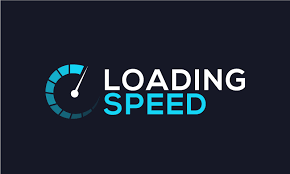
When you’re running an online business, you’ve probably heard that every second counts. But did you know that something as simple as how fast your website loads can have a huge impact on your sales? A delay of just one second can lead to a 7% drop in conversions. A slow website can frustrate customers, negatively impact their experience, and even result in lost sales. But the good news is that improving your page load time doesn’t have to be complicated. Here’s a simple guide to help you speed up your site and boost your sales.
Why Page Load Time Matters for Your Sales
When a potential customer lands on your site, they expect things to load quickly. If your page takes too long, they’re likely to leave and head to a competitor’s site. This not only means you lose out on a potential sale, but it can also impact your website’s ranking on Google.
Additionally, a slow website can damage your credibility. In today’s fast-paced world, people expect websites to load quickly and smoothly. If they don’t, they might start questioning how reliable your business is.
How to Speed Up Your Website
Speeding up your website is essential for providing a smooth user experience and improving your search engine rankings. A slow site can frustrate visitors and increase bounce rates, which hurts your business. To boost your website’s speed, start by optimizing images—use compressed formats like WebP without compromising quality. Minimize the use of heavy scripts and remove unnecessary plugins or code. Enable browser caching and use a reliable content delivery network (CDN) to serve your content faster across different locations. Also, consider using a lightweight theme if you’re on platforms like WordPress. Choose a good hosting provider that offers solid performance and uptime. Lastly, reduce the number of HTTP requests and enable file compression (like GZIP) to make your site load faster. These simple but effective steps can significantly improve your website’s performance, keep users engaged, and help your site rank better on Google.
Here are a few easy-to-understand tips to help speed things up:
1. Optimize Your Images
Images make up a large part of your website, but if they’re too large, they can slow down your site. Try compressing them without losing quality. There are plenty of tools online that can help with this. You can also use newer image formats like WebP, which are smaller and load faster.
2. Reduce HTTP Requests
Every time a user visits your site, their browser makes an HTTP request for each element (like images, CSS, or JavaScript). The more requests, the slower your site loads. Try to limit the number of elements on each page and combine files when possible. For example, you could combine multiple stylesheets into one to reduce the number of requests.
3. Use a Content Delivery Network (CDN)
A CDN stores copies of your website on servers around the world, so when someone visits your site, they get the version stored closest to them. This reduces the time it takes for your pages to load. Think of it as spreading out the load so your website doesn’t get bogged down.
4. Enable Browser Caching
Caching allows repeat visitors to load your site faster by saving some parts of the page locally on their device. So, the next time they visit, they don’t have to download everything again. Set up caching rules for your images, styles, and scripts so users don’t have to reload these on every visit.
5. Minify Your Code
Minification sounds fancy, but it’s pretty simple. It just means removing unnecessary spaces, comments, and characters from your code so it’s smaller and loads faster. You can easily find tools online that will help you do this for your CSS, JavaScript, and HTML files.
6. Pick the Right Web Hosting
Your hosting provider plays a big role in how fast your website loads. If you’re using shared hosting, your website might slow down if others on the same server are using up too many resources. Upgrading to a better hosting plan, like VPS or dedicated hosting, can give your site the speed boost it needs.
7. Use Lazy Loading for Images and Videos
Lazy loading means that images and videos will only load when they come into view as someone scrolls down the page. This way, your page doesn’t need to load everything at once, which helps it load faster.
Test Your Site’s Speed
There are plenty of free tools available to check your page speed, like Google PageSpeed Insights or GTmetrix. These tools will not only tell you how fast your site is but also give you suggestions for improving it. Make sure you check your site regularly to ensure it’s always running smoothly.
Why It’s Worth the Effort
So, why should we care about all this? Well, optimizing our page load time can lead to:
- Better User Experience: Faster websites make customers happier. They’re more likely to stay on your site and make a purchase.
- Higher Conversion Rates: A site that loads quickly is more likely to turn visitors into paying customers.
- Improved SEO: Google takes page load speed into account when ranking sites. A faster site could help you show up higher in search results.
- Lower Bounce Rates: If your pages load quickly, people are more likely to stick around and explore what you have to offer.
